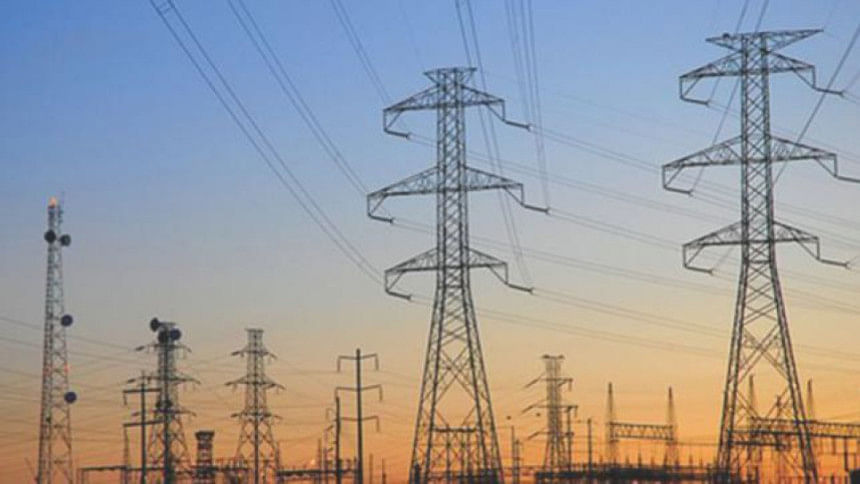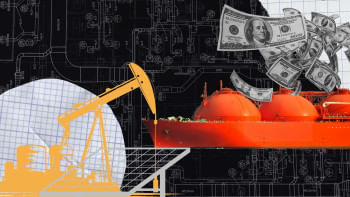A quiet shift in South Asia’s energy landscape

Not many people paid attention when, on a humid June morning, 40MW of electricity began making its way from the rivers in central Nepal to the grids of northern Bangladesh. There was no grand summit, but make no mistake: this unassuming cross-border trade could be the opening act of something far more ambitious, possibly even transformational.
The idea is simple on paper. Nepal, long known for its snow-fed rivers and hydro potential, now finds itself in a position to export power. Bangladesh, in need of diversifying its energy sources and weaning off an overdependence on fossil fuels, has emerged as a willing buyer. India, which sits geographically between them, agreed to let the current pass through its territory.
The wires, in a very literal sense, are now connected. Electricity started flowing on June 15, 2025, under a deal signed eight months ago. And with that, South Asia saw the first instance of a functioning, trilateral power trade arrangement.
Forty megawatts will not rewrite anyone's energy future overnight. But that's not the point. This moment isn't about the size of the deal; it's about its structure, its precedent, and the quiet tectonic shift it represents in how the region could approach energy cooperation going forward.
For decades, South Asia has struggled to build the kind of shared infrastructure that's taken for granted in other parts of the world. Energy, in particular, has remained largely siloed within national borders, even though the logic for integration has always been relevant.
The geography alone suggests potential: hydropower-rich nations like Nepal and Bhutan upstream, densely populated and energy-hungry economies like India and Bangladesh downstream. But until now, politics, red tape, and mistrust have kept those connections mostly theoretical.
This deal changes that. It's modest, seasonal, and very much pilot in nature—power will only flow during Nepal's monsoon months, when river-fed turbines are at their peak. Yet, it proves something many had quietly doubted: three countries with distinct interests can make cross-border power trade work. The electricity is drawn from Nepal's Trishuli and Chilime hydropower stations. It then travels through a 400kV line stretching from Muzaffarpur in India to Bheramara in Bangladesh. Nepal handles the losses and logistics up to the Indian border; Bangladesh takes over from there.
The pricing is competitive, pegged at $0.064 per unit—enough to justify the costs on both ends, but not so high as to discourage future expansion.
Nepal, a country that was dealing with daily power cuts not too long ago, now sees hydro exports as a ticket to broader economic transformation. Its energy sector is scaling fast: installed capacity has nearly tripled in under a decade, and the potential still dwarfs what's currently online.
With more than 40,000MW considered economically viable, the possibilities are enormous. Revenue from exports could help ease the trade deficit, attract foreign investment, and breathe life into local economies where many hydropower projects are based.
Bangladesh, for its part, needs this kind of diversification. Its power system has grown rapidly, but it remains tethered to gas and imported petroleum, which are becoming more volatile. Hydropower from Nepal offers cleaner energy, as well as a hedge against global price swings and supply disruptions. Even small amounts of imported clean power help chip away at emissions, which is no small consideration for a country so vulnerable to climate impacts.
India's role is significant. By facilitating the trade, not just diplomatically, but also by allowing its grid to serve as a conduit, Delhi signals that regional energy cooperation is no longer just a talking point. Stability and growth in neighbouring economies serve India's long-term interests, especially energy security and climate resilience across the subcontinent.
But none of this is smooth sailing. The arrangement, while promising, is still fragile. It depends on a narrow seasonal window when Nepal's rivers run high. Once the dry months arrive, the surplus dries up. Grid balancing, load forecasting, and backup generation all become harder. And that's before you get to the regulatory entanglements: every cross-border energy transaction still needs to navigate a maze of licences, tariffs, and political risks.
The recent delay in Bangladesh's letter of credit, which pushed back the timeline by months, is a case in point. These are not just bureaucratic hiccups; they can threaten confidence in the entire model. Add in climate variability—flash floods, glacial shifts, and erratic monsoons—and even the most carefully laid plans start to look uncertain.
Then there's the question of scale. Forty megawatts is an important start, but South Asia's energy future will be written in thousands, not dozens, of megawatts. Nepal has outlined ambitious goals: over 28,000MW in generation capacity and 15,000MW in exports by 2035. Whether that vision materialises will depend not just on hydropower output but on transmission capacity, investment appetite, and—perhaps above all—trust among neighbours.
What happened on June 15 may seem small, but it matters precisely because it's real. It's not a memorandum or a vision document—it's electricity, flowing today, thanks to years of diplomacy, engineering, and patient negotiation. In a region often defined by its fractures and flashpoints, the current moving through these lines carries more than power. It carries proof that cooperation, when grounded in mutual benefit and quiet persistence, is possible. And perhaps, in a warming, wired world, that's exactly the kind of energy South Asia needs most.
Md. Ibrahim Khalilullah is vice-president of Bangladesh Law Alliance. He can be reached at [email protected].
Views expressed in this article are the author's own.
Follow The Daily Star Opinion on Facebook for the latest opinions, commentaries and analyses by experts and professionals. To contribute your article or letter to The Daily Star Opinion, see our guidelines for submission.

 For all latest news, follow The Daily Star's Google News channel.
For all latest news, follow The Daily Star's Google News channel. 









Comments